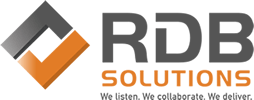APRIL 2019 NEWSLETTER – TAKING YOU FORWARD
April 10, 2019April 2019 Newsletter – Taking you Forward
Software Integration – Worth It?
April 9, 2019Yes, it is worth it, in the end! Software integration is like pulling up the carpet in a fully furnished home, it is a challenge regardless of the transition length or size. Your new software company should have an integration …
MARCH NEWSLETTER – MAKE A CUSTOMER, NOT A SALE
March 14, 2019MARCH NEWSLETTER – MAKE A CUSTOMER, NOT A SALE
Post-Sale Support – What you Need to Know
March 6, 2019We find that one of the largest factors our customers consider is post-sale support, because with this type of purchase there will, without a doubt, be a need for it. It is best to inquire with your prospective software company …
Inclusion: Customer Led – Customer Driven
January 17, 2019In today’s market, it is easy to see why it is important to make the switch to a customer inclusion business model with customers as a part of the business plan and/or part of the team. Customers have not traditionally been …
JANUARY NEWSLETTER – DELIVERING INCLUSION
January 17, 2019JANUARY NEWSLETTER – DELIVERING INCLUSION
Collaboration is the Key to Success
December 20, 2018Collaboration is one of the most unique things about RDB Solutions. Different parts of our team meet together regularly to discuss ways to not only better the company but to better our software. Lumber Expert was developed by our amazing …
December Newsletter – Delivering Collaboration
December 20, 2018December Newsletter – Delivering Collaboration
October Newsletter – Delivering Accountability
October 18, 2018October Newsletter – Delivering Accountability
September Newsletter – Delivering Excellence
September 18, 2018September Newsletter – Delivering Excellence





